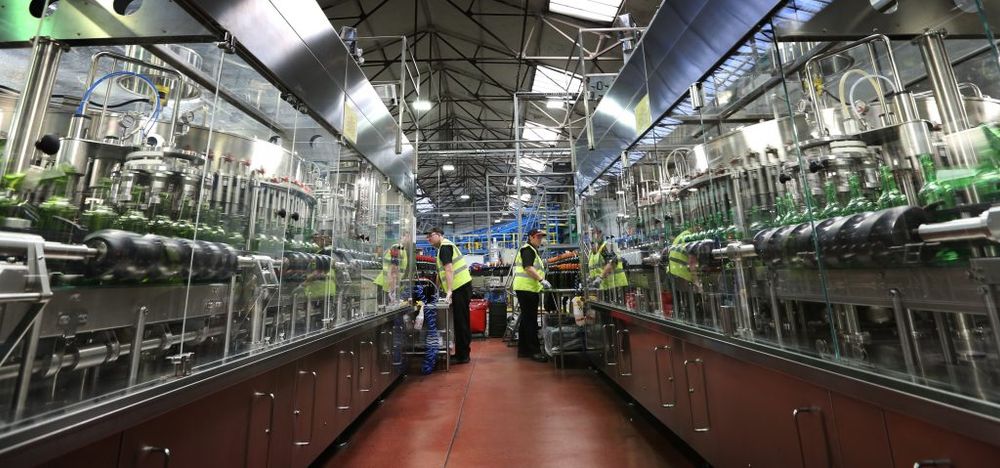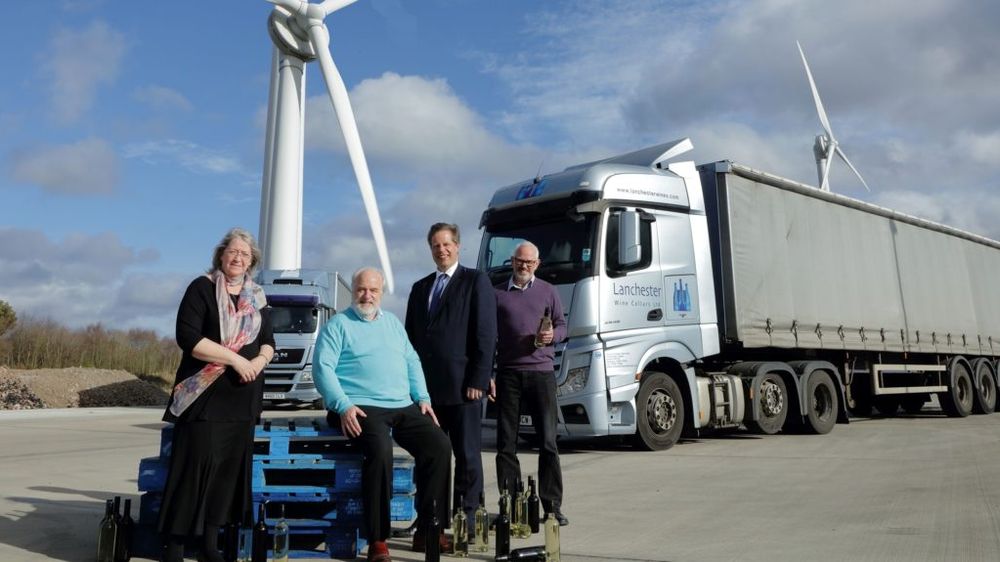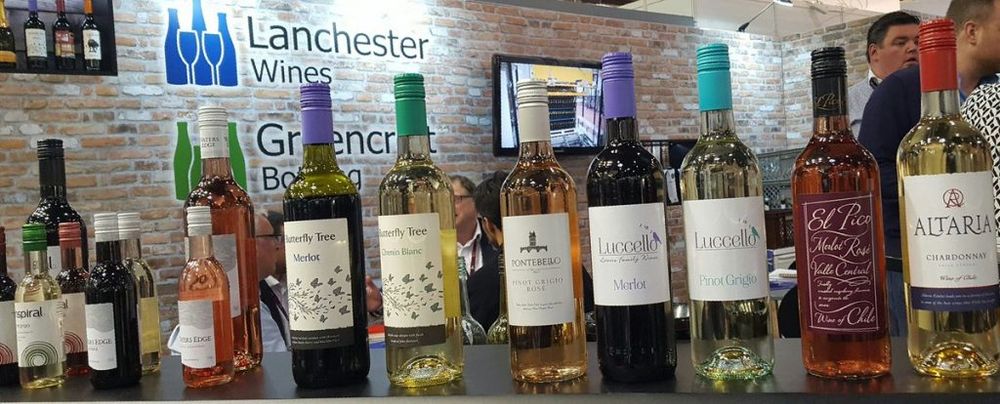Richard Siddle takes a look at the industry-leading sustainability measures the Lanchester Group continues to follow as it looks to grow the business on the back of running an environmentally clean business.
In business there are plenty of companies that are very good at talking the talk, but scratch below the surface there not that many who are also walking the walk and putting those ideas into practice. Particularly when it comes to following a sustainable and environmental agenda.
And then there are organisations like the bottling, packaging and wine development company, the Lanchester Group, that are arguably so far ahead when it come to putting the environment first in everything they do, they not only have a huge competitive advantage, they are setting the benchmarks for others in their field to follow.
Its objective is clear: “Our aim is to be the greenest and most sustainable wine business in the world and we believe we’re well on the way.”
Straight talking Tony Cleary, managing director of the Lanchester Group, that remains steadfastly a family business, is not the kind of business leader to go in for mission statements, but he is very clear in his belief that “every business has a duty of care to minimise its impact on the environment”.

Lanchester Group already includes many state of the art packing and bottling lines and will be introducing canning and sparkling lines at its new bottling facility
Just look at its track record. As a business it can already lay claim to be powered almost completely by renewable wind and solar energy having invested over £8million in renewable heat and energy generation at its sites across the North East of England. That has included erecting four wind turbines, back in 2011, which produce around 5.5m kWh of clean, renewable electricity a year, enough to provide enough energy for all its main 26-acre Greencroft estate, with another surplus electricity to feed back into the National Grid, providing additional power for 800 homes. Solar panels on the roof of its Lanchester Wines’ offices also provide enough renewable energy to power its business on a daily basis.
It means that, to date, all the sustainable measures that have been taken at the Greencroft estate has saved around 11,750 tonnes of carbon and generated enough energy to power 60,200 houses.
Bigger, better and more sustainable
It’s now set to embark on an even more ambitious building and sustainability programme that will see it open a new bottling facility on the estate in 2020. This will practically double, and eventually replace, its existing 120,000 sq ft Greencroft Bottling facility to 220,000 sq ft and take its production capability up from filling 150million litres of wine per year to 400m litres. All the while producing more clean energy than it uses.
The site will also see the equivalent of 1m mega watts of solar panels being installed, capable go generating 850,000 kWh a year.
But what is particularly ground breaking about its latest plans – that could also have national implications – is how it wants to use flood water from all the disused coal mines on the site, using potentially world-changing heat pump technology, to provide all the heat it needs for its new bottling facility and more.
It’s a move that has sparked interest across all parts of the country that have strong coal mining traditions and Lanchester is now working hand in hand with the government’s Coal Authority and the Environment Agency to see what applications this could have for discussed coal mines right across the country.
Suddenly what were effectively wasted areas, abandoned and full of water, can be brought back not only to life, but potentially become commercially viable again and bring real economic benefits to the communities that suffered the most from their demise.

Where the new bottling plant will be at the existing Lanchester Group site in Durham
National significance
Adam Black, director and head of energy at the Lanchester Group, says there has been enormous interest from local authorities in what the company is looking to do with its coal mines.
The fact it is their idea is something they want to share rather than hide away, he says. It all works by the heat that is generated by moving the flood waters in and out of the mines. “It has taken us three (hard) years to get to this point,” says Black with heat generated from its mines already heating its existing warehouse buildings.
But the ramifications could be enormous with the Coal Authority even claiming the heat generated from its coal mines could be enough to heat every home in the UK.
“The Coal Authority is over the moon about this,” says Cleary.
The project clearly means a lot to Cleary, whose family have long standing roots in the north east, and what was such a strong coal mining area. As he explains: “Our aspiration is to become a thought leader and sharer of best practice. As a privately owned, family business we are in a largely unique position which enable us to experiment and take risks in order to find new solutions, and we want others to emulate our successes – we believe what is good for the environment is good for us all.
“We don’t have any shareholders to please. If we want to do something and believe it is worth doing then we we can do it. If it means taking a risk then so be it. We want to share this with people. There is nothing secret squirrel about it at all.”
He also talks about how “proud” it makes him feel that the values he has have been embraced and taken on to new levels by the team around him. “We want to do things right and we want to do things sustainably,” he says.
It’s noticeable that the new site will also include a visitor centre that Cleary hopes will be used by business, universities, academics and local schools to spread the word about what can be done to be profitable and sustainable at the same time.
All of which is being done with one eye on the long term future, says Cleary. “The millennials now and the next generation growing up will be our customers and our potential employees in the years to come. Which is why it is so important to have school visits here. We want to do much more of that.”
Lanchester’s strong sustainable credentials has already attracted many “smart people” into the business and he is confident it will continue to do so in the future. “Good people can be hard to come by and we need to attract more in the future,” he says.
Good business sense

For Tony Cleary, sitting centre, and his family and close team sustainability has always been central to the company’s agenda
Whilst Cleary, and his team, are 100% focused on their green and sustainable agenda he insists they are not doing all this just because they like the soil in between the toes of their sandals. All these steps have been taken because they are both the right thing to do, but they also make long term commercial sense as well. The two have to go hand in hand, he stresses, or else you are following a sustainable strategy that is unsustainable to maintain.
“We are not all about hugging trees. We are very focused that this has to work commercially. We expect to get pay back on this outlay within four or five years.”
All the heat creation and energy saving measures, for example, being implemented by Lanchester means it will be the first facility of this size not beholden to the National Grid. Saving the company huge sums in electricity bills. “Which is great news with the price of energy and electricity going up all the time. We won’t need to buy electricity as we can create our own.”
If that’s not enough it is also working with battery manufactures to install an energy storage capability for times when renewable energy generation does not cover factory energy requirements (ie, days with no wind). “We will be the first business to pioneer this approach,” it says.
He claims, for example, the new bottling facility will be most state-of-the art in the UK.
From a business point of view it will also allow Lanchester, through Greencroft Bottling, to allow its customers and producers to bottle sparkling wine on the site for the first time. Again with the added sustainable benefit of taking the heat generated in the process of cooling the sparkling wine to make it suitable for bottling, and use it to heat the new 220,000 sq ft building – in a heat pump process that has not been attempted before.
The development plans feel even more impressive as they come at a time when so many major companies are putting such investments on the back burner until we know what is happening with Brexit.
Not Cleary.“We were never going to stop our investment programme because of Brexit,” he says. “In fact it’s a good time to be putting your head above the parapet.”
It’s also needs must as Lanchester is in the very enviable position of having to expand simply to keep up with the demand it is getting to fill more bottles. “We were beginning to struggle to keep up with our present facility,” he says.
Which is why the development programme has been brought forward from the end of the year to now so that it is in a position as soon as possible to capitalise on all the new business opportunities it has.
As well as the sparkling line, the new bottling facility will include a canning line for the already increased demand for wine in a can.

Some of the exclusive wines created by Lanchester Wines, the wine development arm of Lanchester Group
Building on a strong platform
It’s certainly not building a new bottling plant because its current one is out of date, stresses Cleary. “I think we have go the most modern facility in the UK in any case,” he says pointing to theseven new bottling lines it has introduced over the last six to eight years.
“The wineries we work with are happy to bring their crown jewels here as we know we will look after them.”
The challenge and opportunity now, adds Black, is to “build a competitive advantage for the next few years” and build on the fact “sustainability is already the differentiator” for the overall company. “We now have the opportunity to utilise better technologies and it’s exciting to be able to offer these to the drinks industry.”
Cleary agrees: “We have got the space on the estate and the opportunity to do this and future proof ourselves.”
The plan in the short term will be to run the two bottling facilities side by side until the time is right to move everything across to the new building. Which Cleary anticipates will happen in the first quarter of 2020. That will then allow Lanchester to use the old facility for much needed extra warehousing space.
10 years ahead
It’s clearly exciting times for the Lanchester Group and the new expansion plans it has ready to roll will help take the business to another level. Or as Cleary puts it: “We are out there playing football – the rest of them are playing cricket. This new facility will put us 10 years ahead of everyone else.”










































